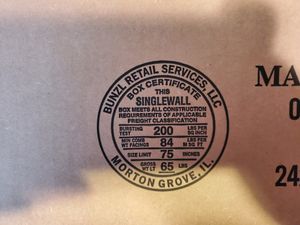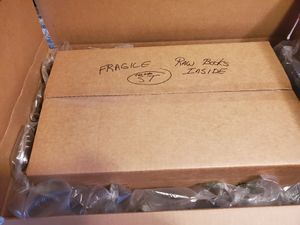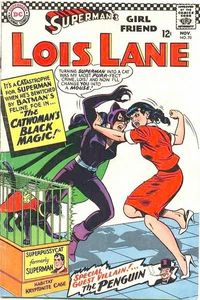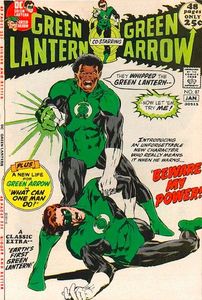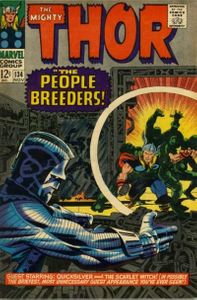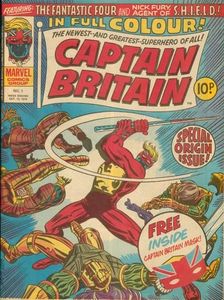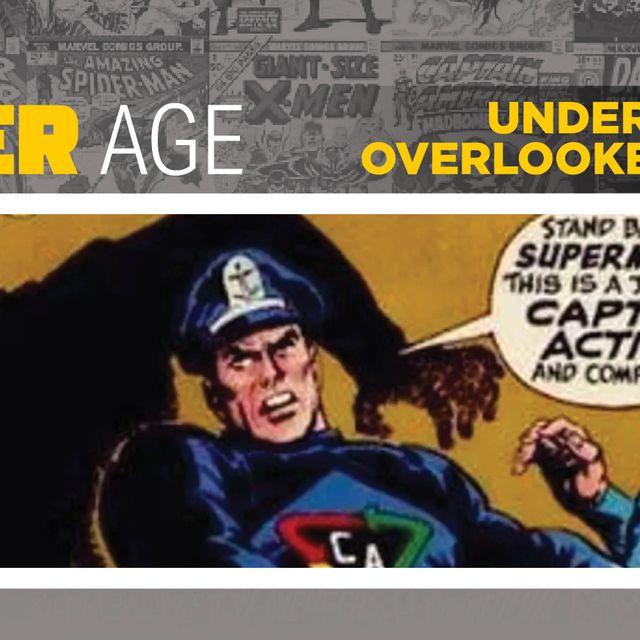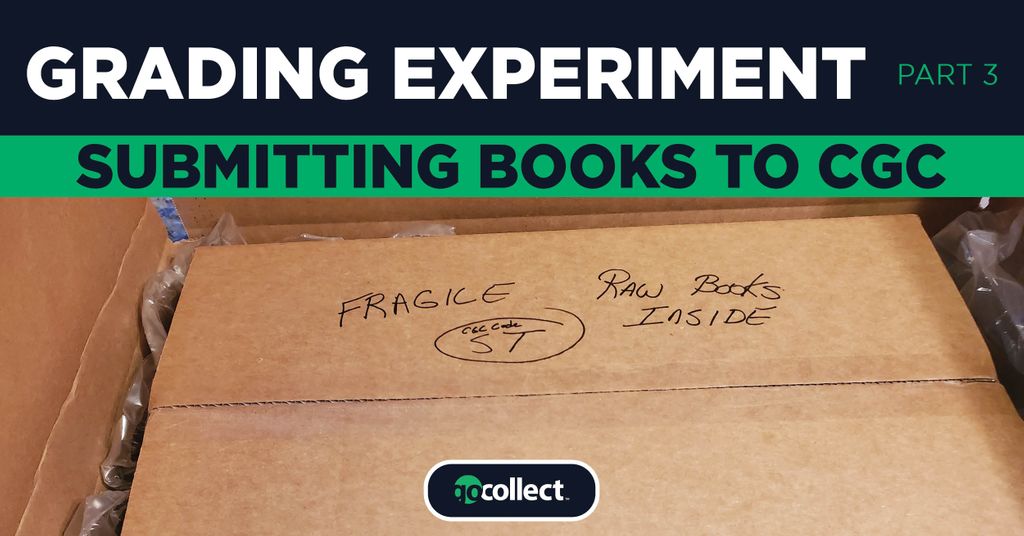
1. Joining CGC
I had to join CGC to begin the process. There are various memberships available that start from $0 all the way to $299. Different memberships provided additional benefits. The membership requirement is the reason some collectors and investors utilize LCS and others to handle the submission process.
Experiment Data
I paid for the Elite membership. I determined that writing for GoCollect warranted the higher expenditure. This level will also provide me access to grading notes that I have been using now for articles. Everyone should determine the appropriate level for themselves. I always believe it is better to get a "little bit more" than "a little bit less" because your needs usually grow rather than shrink. In addition, I do not know if you can upgrade your membership at a later date while your current membership is still valid.
Questions for the future:
- Does CGC allow membership upgrades for current members, and if so what is the cost?
- What memberships does CGC recommend for most collectors or investors?
Cost: $299 CGC Membership
2. Packing Materials
First Issue
CGC sells shipping kits. The membership I selected comes with a credit for the purchase of those supplies. I had intended to use the kit when the first problem we faced arose. The kits were unavailable, so the experiment was put on pause.
When the kits did become available, there was a disclaimer stating **Due to current international supply chain issues, CCG reserves the right to substitute unavailable items with similar products.**. Supply chain issues are problems for most companies currently, therefore this is not a problem unique to CGC. This problem, though, caused some concern from the people solicited to provide books for the experiment.
What You Need to Know
Boxes are rated based on different factors. The book submitters expressed their concerns about the kits. Some did not like that the box ratings were not provided in the product descriptions. Others did not like that CGC could make substitutions that could possibly be inferior to the original items. Consequently, a trip to the local UPS store was required to pick up two highly-rated boxes. The first box would hold the books as described in the CGC packing tutorial video online.
The books were bagged and boarded. Next, the boarded books were packed in a flash mailer for comics and magazines. This box accommodated the Gold Age Whiz #21 and also the oversized Captain Britain #1 UK comic. The flash mailer was covered in bubble wrap and placed in the first box. A deviation from the video was implemented to meet the needs of the participants.
Solution
The UPS clerk recommended double boxing the books to better protect them. Double boxing is a technique used to protect valuable items during shipping. The second box provides an additional layer of bubble wrap and cardboard protection. One participant was concerned that if the box was submitted as shown in the video it would be subject to possible damage in transit more than if it was double boxed. The additional box would provide extra protection.
Questions for the Future:
- What is the rating of the CGC boxes?
- Does the CGC kit accommodate Gold, Silver, UK, and current comics?
- What is the rating of CGC substitution supplies?
Costs: $21.49 UPS Store for 2 boxes
3. CGC Submission Form
A variable raised its head that greatly impacted the books submitted. We were not aware if you could send in different tier books on the same form and/or in the same mailing box. We tried to call the CGC customer service number but were number 12 on the waitlist and the list did not seem to be moving quickly.
The uncertainty of mixing tiers caused us to alter the books that were going to be initially submitted. The final list was: Caliber Presents #1; Superman's Girlfriend Lois Lane #70; Green Lantern #87; Thor #134; Whiz Comics #21; and Captain Britain #1. The selected books were all in the same CGC tier. A declared value was submitted for each book. Finally, all books were listed to be pressed and graded.
Questions for the future:
- Can different tiers be sent in one order?
- Can different orders be shipped in the same box to cut costs?
- What will the time deviations be for different book tiers?
Costs: $882.00 for pressing and grading
Side Issue:
My membership included a 10% discount on grading tiers. I selected to send in my payment by check to see how CGC would handle my discount. In an era where most pay for services with a credit card, this may not be an issue, but some companies/individuals may require stricter cash controls. Paying by check is one way to implement these controls.
The question will be how, or if, CGC honors the discount. The discount could be quite substantial for some orders and thus should not be ignored when one is determining the level of their membership.
4. Shipping
CGC accepts submissions in person at a show or by mail based on the product, location, and nature of one's membership tier. The only option available for the experiment was to send the package in by mail carrier. FedEx, USPS, and UPS are the carriers CGC recommends. The submitter's personal preference may, and should, influence the carrier used. This selection is very important.
The experiment utilized FedEx services. CGC would be using them to send the products back once the grading and pressing were completed. We thought it best to follow CGC's lead. Another reason FedEx was selected is because of risk of loss issues. The submitter holds the risk of loss until the items arrive at CGC. Good coverage and the company's internal controls protect the submitter from lost or damaged books. Bad experiences by all made the USPS a non-factor.
It is important to remember that insurance coverage should be based on the fair Estimated Value used on the CGC form. Insurance companies WILL review this document if a claim is filed. In addition, this number greatly influences the cost of the shipment. The accuracy of declaring an item's value influences many factors in the process. Make sure you are fine with the number selected.
Experimental Data
August 30 was the shipment date, for those keeping track.
Questions for the future
- Who is the better carrier for the packages?
- Does homeowner or renter insurance cover books sent in the mail to be graded?
- How long will we wait?
Costs: $102.56 for FedEx shipping and insurance for declared valued
5. Next
All good experiments require adaptation. As a consequence, CGC shipping kits will be ordered for their quality to be evaluated. Additionally, a lower tier of items will be sent in the kit to be pressed and graded. This will allow the CGC kit's quality to be evaluated while not risking expensive books. The submitters have agreed to provide some books for this part of the experiment. Observations will be provided to our readers for you to make the ultimate choice on how you want to submit your items.
One submitter did suggest that the higher the value of the book, the more secure methods and better quality shipment items you may want to select. Would you trust USPS, UPS, or FedEx with your 9.6 copy of Action Comics #1 being shipped in a $5 Walmart shipping box?
6. What we learned so far
Grading costs include more than the actual fees charged by the grading companies. As noted, costs such as supplies and shipping fees are not cheap. Time is also spent during the process. Hidden costs will have to be factored into the equation to determine the true cost of buying books raw versus graded. In any event, there are some costs that can never be anticipated.
The greatest thing that was not factored into this experiment was the emotional toll shipping books takes on individuals. Collectors and investors fear the "what ifs" when books are not in their possession. Submitters may trust bus drivers and teachers to care for their children, but those same people fear the people that now are handling their prized books. This was a cost never even considered before the experiment was conceived. It is a high cost now for some participants that may have them re-thinking grading in the future.
Keep up with Joe's previous blogs about his experiment!
-
COMIC BOOK GRADING EXPERIMENT: ADVICE FROM CGC PRESIDENT MATT NELSON (PART 1)
-
GRADING EXPERIMENT PT 2: BUYING RAW BOOKS TO MAXIMIZE ROI
-
ADVICE FROM CGC PRESIDENT MATT NELSON: THE GRADING PROCESS
*Any perceived investment advice is that of the freelance blogger and does not represent advice on behalf of GoCollect.
